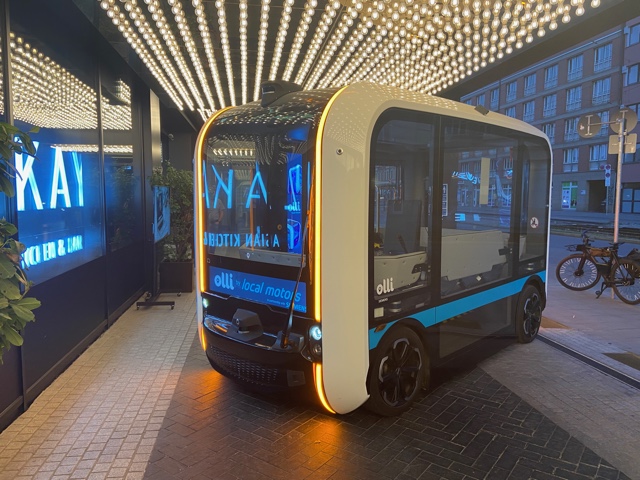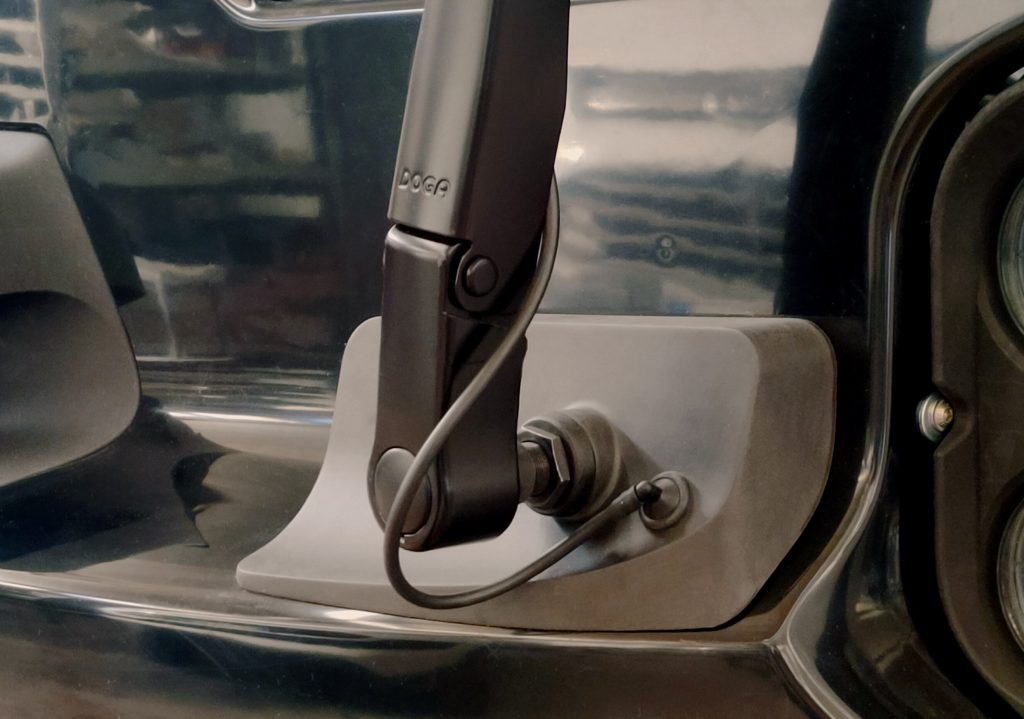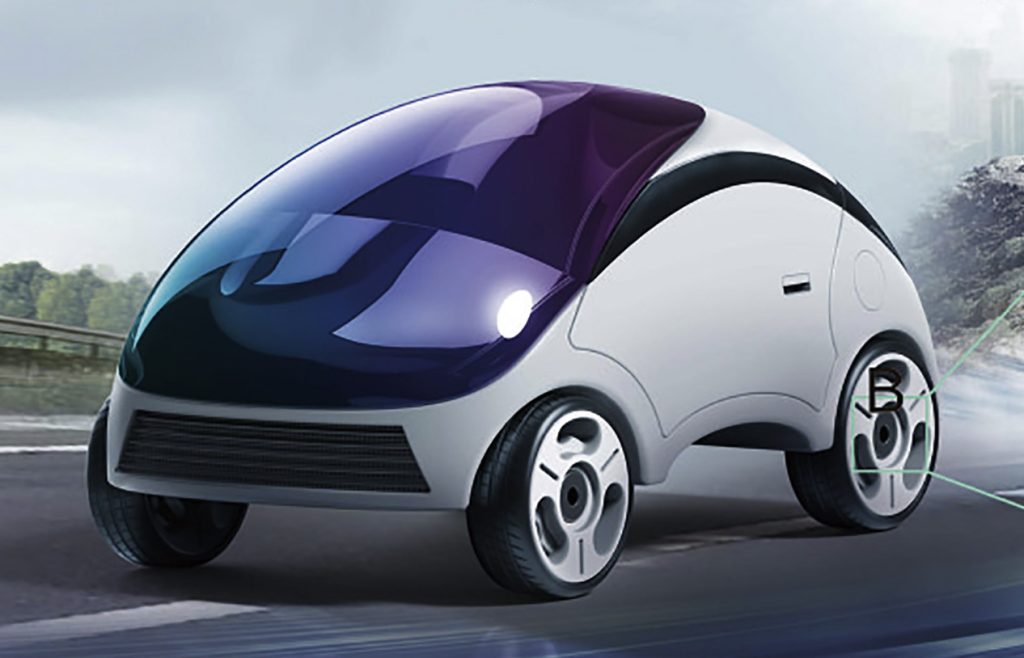Automotive OEM Local Motors, manufacturer of the partially-3D printed ‘Olli’ autonomous vehicle (AV), has shut down according to Linkedin posts from several of its employees.
Over the last five and half years, Local Motors has built various structural elements of its self-driving shuttle using 3D printing, in a way that has allowed it to be customized for use in different urban city center environments. However, while the firm remains silent on reports that it closed down on Friday January 14th, some of its now ex-employees have taken to social media to pay tribute to its achievements.
“I am disheartened to announce that Local Motors will cease to exist as of January 14. I was only there a few months, but loved every minute of it,” Chris Stoner, Local Motors’ ex-VP of Sales and Customer Success said on Linkedin. “I made some great friends, both locally and globally, which makes it worthwhile. The autonomous vehicle space is an exciting emerging market with plenty of opportunity.”
“Experiencing first-hand the skill and dedication of the people I worked with, I have no doubt AVs (like Olli) are the future of transportation.”

The rise and fall of the ‘Olli’ AV
When debuted in 2016, the 25 mph-capable Olli was first marketed as a small self-driving shuttle bus, capable of carrying up to 12 passengers around tight city streets and university campuses at once. Thanks to its built-in 360° LiDAR scanners, the AV was able to sense its surroundings in all directions, enabling it to navigate independently, although they were also driven with safety drivers just in case.
Built in-part using a Cincinnati Incorporated Big Area Additive Manufacturing (BAAM) 3D printer, it was said that the Olli could be customized for use within varying inner-city environments, such as that of bustling Berlin, with Deutsche Bahn deploying it in the city as part of a six-month pilot program, in which it carried over a 100 passengers a day.
Following the initial success of its AV, Local Motors launched the upgraded ‘Olli 2.0’ in 2019, an all-electric shuttle that could reportedly be constructed in half the time of its predecessor, which itself took just ten hours to build. The vehicle also featured voice recognition and cognition systems developed by MIT start-up Affectiva, which were designed to allow for passenger mood tracking and route optimization.
In October 2020, Local Motors managed to raise $15 million to fund the Olli’s ongoing R&D, and as recently as December 2021, it upgraded the vehicle with CRP Technology–3D printed windshield wiper parts, but it’s now reported to have ceased its operations on Friday January 14th, likely meaning that its vehicle production process has closed down too.

Local Motors’ ‘lack of funding’
Despite being reached out to by 3D Printing Industry, Local Motors hasn’t yet commented on its apparent demise, but with many of its staff now actively seeking new employment, the writing appears to be on the wall for the beleaguered firm.
The company’s silence on the issue has paved the way for many media outlets to draw their own conclusions on why it failed to make the Olli a business success. Citing ‘an anonymous source familiar with the situation,’ automotive news site The Drive has reported that Local Motors’ closure “boils down to a lack of funding,” while autoblog has published an article saying this wasn’t due to its AV’s safety failures.
Having reached out to the same source as The Drive, autoblog found that the firm’s demise was “unrelated” to a crash in Ontario reported late last year, in which an attendant was critically ‘injured.’ Following the accident, testing of the Olli 2.0 was halted, with the Toronto website stating this was due to “an incident in Whitby involving a similar service,” as well as “public health guidance regarding COVID-19.”
Whether it be due to cash or crash issues, Local Motors’ closure comes at a time when, publicly at least, it appeared to be making progress in local trials, with CEO Vikrant Aggarwal committing to scale the Olli “both commercially and operationally” in October 2021, but having now apparently closed its doors, its former employees have been left contemplating what might’ve been.
“As with most adventures, they must come to an end,” added Jeff Hollowell, Local Motors’ former VP of Information Technology via a Linkedin post. “Local Motors has closed its doors. It has been an exciting, challenging, and educational experience working with Olli and all the team at Local Motors. I was fortunate to work with amazing individuals and help build what others said could not be done!”
“I’ve been able to grow as a leader and learn new skills that I now take to my next path forward. Thanks to all the team members and partners that I was able to work with. The time spent was well worth the effort.”

AM’s ongoing automotive efficacy
While the Olli’s downfall represents a step backwards for AV commercialization, 3D printing continues to be deployed across automotive, with many of the world’s leading car manufacturers leveraging the technology within their operations.
Late last year, German sports car manufacturer Porsche announced that it had made a strategic investment in INTAMSYS. Having previously 3D printed bucket seats and partnered with SLM Solutions to create a proof of concept E-drive housing for the front axles of its vehicles, the automotive firm’s move is a sign that it intends to continue scaling its adoption of the technology.
Likewise, in June 2021, Volkswagen unveiled plans to integrate binder jet 3D printing into its production process at its main plant in Wolfsburg, Germany. At the time, the firm said that it aimed to achieve this by expanding its partnership with HP and establishing a new one with Siemens, that would enable it to both reduce costs and increase productivity.
In more experimental applications, additive manufacturing has also been deployed by researchers at the Chinese Academy of Sciences to create novel nanogenerators for self-driving vehicles. Built with a unique bearing structural design, the team’s triboelectric devices are designed to have both mechanical energy harvesting and self-sufficient sensing functionalities.
To stay up to date with the latest 3D printing news, don’t forget to subscribe to the 3D Printing Industry newsletter or follow us on Twitter or liking our page on Facebook.
For a deeper dive into additive manufacturing, you can now subscribe to our Youtube channel, featuring discussion, debriefs, and shots of 3D printing in-action.
Are you looking for a job in the additive manufacturing industry? Visit 3D Printing Jobs for a selection of roles in the industry.
Featured image shows the Olli 2.0, complete with the new windshield wipers and 3D printed wiper cover parts it was fitted with late last year. Photo via Local Motors.
